The Breakdown
Pros
Cons
Introduction
To repeat a statement made in the Introduction Section of the inView Wireless Helmet Brake and Turn Signal System review…”technology isn’t standing still”, even in our COVID-19 world; in fact, in some ways, some technologies have seen an acceleration with many solutions coming into their own to provide timely pandemic coping tools and solutions.
From a motorcycling perspective, it seems many of us have also ramped up our desire to ride, alone or together; have you noticed how hard it is in some markets to find a lightweight off-road or ADV-travel oriented moto on showroom floors? Don’t get me wrong, this is not a bad thing – any upturn should be a good thing in these days.
But this uptick, as we transition from summer to early fall, to getting two wheels covering ground – paved or otherwise, also means there are as many, if not more of us on the roads; and with cooler nights and less heat and humidity during the day, motorcyclists are everywhere it seems.
Which means that we have become an even bigger presence on the bi-ways and highways (and everything in between) and as such, we all need to do our part in being and remaining an identifiable visible presence while on those same roads.
Most motorcyclists, including those of us with a long involvement in safety at all levels and within all disciplines know that our ‘presence’ is a tenuous thing; one road user will recognize and acknowledge your presence but the next ten users won’t. And for new riders, even with preparatory training, establishing a presence takes work.
We really are, for the most part, invisible on the road and after 50+ years of riding, this fact remains first and foremost when starting the motorcycle. Is it frustrating – yes, is it fact – totally. This invisibility is due in large part to our inherent smaller physical footprint that translates into less ‘presence’, but why? Lets’ look at two basic facts:
- Stock motorcycle lighting – a single or set of front-facing headlights and an even smaller rear facing taillight just doesn’t cut it compared to larger vehicles with multiple left/right factory-based lighting systems.
- Motorcycle footprint – two wheels inline, five to seven feet long, usually narrow with the highest point the rider, compared to large, larger and huge vehicles with much more of a footprint and thus presence.
There is another component in all of this as well – the rider or riders. We have a big role to play; if we aren’t part of the solution in making ourselves visible, which helps establish the person/machine presence on the road, through the wearing of high-visibility personal protective equipment or PPE gear – helmets or outer gear, then we remain part of the problem.
Establishing your presence, maintaining your space – in a cooperative manner of course, and being aware are critical in building and maintaining situational awareness and keeping the 360-safety bubble viable. You might be able to ‘see’, but if you cannot ‘be seen’ or are not conspicuous, then that safety bubble can collapse anytime.
Thankfully, in addition to our education, training, and experience we have a safety toolbox to avail ourselves of; most motorcyclists have and use those tools – sometimes they are physical things and sometimes they are otherwise, but we use them.
And one of the newest additions to the safety toolbox is a new product, based on proven evolvable technology – the Brake Free Smart Brake Light by Brake Free Technologies.
Brake Free Technologies, Inc.
Brake Free Technologies, Inc., is a small team of motorcyclists with a love and passion for all things related; and a desire to share this passion by creating beautiful and highly functional products for fellow riders.
With the idea that motorcycle safety (see above) does not have to come at the expense of styling and that both function and style can be accommodated, the company was launched with the first prototype realized in April 2014.
The objective was to provide a product that the rider would want and be proud to wear on their helmet and, it needed to be simple to use, simple to install, and make a BIG difference in improving motorcycle/rider visibility or conspicuity.
And with their passion for motorcycling and desire to bring the Brake Free Smart Brake Light to market and, the world, in April 2017 the company launched their IndieGoGo crowdfunding project and with the help of 2,138 backers, the Brake Free Light is here.
Brake Free – The Smart Brake Light
The Brake Free, Smart Brake Light is a stylized ruggedized hard plastic housing that attaches securely to the back of the helmet with a small 3M VHB adhesive mount; snap on, snap off.
Laid out in a distinctive eye-catching pattern are 100 ultra-bright LEDs grouped as four panels or layouts on the left and right perimeter and upper and lower centre points.
These layouts and lensing combine to provide a large visual output footprint day or night that instantly increases your visibility (conspicuity) to surrounding road users and makes the rider a far more identifiable part of the motorcycle/rider combination on the road.
This distinctive and very bright output is provided courtesy of two integrated sensors and a sophisticated processing algorithm that works seamlessly to detect ‘Braking’ (brake actuation, dynamic braking (off-throttle or downshifting) and rapid deceleration (emergency braking actions) and immediately activate, at full output, all 100 ultra-bright LEDs; it’s not to be missed.
The module is large compared to competitive products, but given its styling, effective use of ultra-bright perimeter lighting, large visual output footprint and the fact that it is completely self-contained, it all works and does so in spades.
With all functional components integrated onboard – hardware, firmware, and power, the Brake Free product is about as plug-n-play as you can get. Turn it on, set it for the desired mode (Active, Pulsing or Stealth) and voila – an instant visibility increase that is hard to miss.
And if some initial visual is needed regarding Brake Free output, the lead video on their website is a great starting point in revealing just how effective Brake Free is and how eye-catching it is.
How Brake Free Works
Function and output of the Brake Free is based on wireless brake detection technology using a combination of gyrometer (for orientation and angular velocity) and accelerometer (proper acceleration) along with a powerful patented brake detection algorithm to autonomously detect slowing, braking, engine braking, or downshifting.
Based on the principles involved and the technology used, Brake Free provides three types of braking output: regular braking output, – when front or rear brakes are engaged; deceleration or engine braking – when rolling off the throttle or downshifting without motorcycle brakes being activated; and, emergency braking actions – that trigger a special output pattern.
The user can choose between one of three settable visual output modes – Active, Pulsing, and Stealth, all described below in the Brake Free Functionality Section.
As well, Brake Free has three (four actually) preset automatic modes that cannot be changed – Emergency Braking Mode, Sleep Mode, Low Battery Mode and Overheating Mode.
Features & Specs
- 100 ultra-bright LEDs create a large helmet-mounted brake light
- Large distinctive visual ‘footprint’, LEDs have 120 degree viewing angle
- Detects all deceleration events – braking or dynamic braking (engine/downshifting)
- Long lasting rechargeable battery, 2950 mAh Li-Ion, typical 8-12 hrs ON time
- Module is 184mm x 84mm x 30.40mm (7.24in x 3.3in x 1.57in) Width/Height/Thickness
- Aerodynamic design and lightweight – 200gr or 7.05oz
- Easily swapped between helmets with additional mounting used
- Stand along unit, self-contained with LEDs, sensors, and rechargeable batteries
- One button control – On/Off, mode selection
- IP65 – rated for all weather riding use
- Micro-USB charging port with weather-cap – 5V DC, 1A max charging rate
- Universal mount with 3M VHB adhesive, simple engagement – snap on/snap off
- Operating temperature range: -20C to 60C (-4F to 140F)
- Charging temperature range: 0C to 45C (32F to 113F)
In the Box
The Brake Free product is packed in a simple attractively styled cardboard container with the typical strategically folded insert pieces; all great as the whole piece is recyclable.
Packed securely inside were: the Brake Free module, one Brake Free adhesive mount; a micro-USB charging cable; Quick Start Guide; Installation template (great inclusion); and an alcohol wipe (just make sure the alcohol-based wipe can be safely used on the helmet).
Brake Free Functionality
To say the Brake Free is easy to use is a true understatement. It is one of the easiest safety-based rider mounted accessories that you will likely ever use; and use it you should.
To power the Brake Free ON, hold the top control button briefly (1s). To power the Brake Free OFF, hold the control button for two (2) seconds or until the lights go off.
To get a sense of how well the Brake Free responds to the forces acting upon it and to see how well ‘tuned’ the system is, turn the unit on and hold it in one hand, then push it forward quickly – this triggers the standard Brake mode, after which it will go back to the 20 percent output condition. A quick sudden full arm push outward should trigger Emergency Brake Mode, indicated by three full output pulses and then steady full output.
User Selectable Output Modes
The primary Output Modes are user-selectable using the Power or control button. Once the Brake Free is turned on and has finished its self-check cycle (indicated by three pulses of the centre LEDs), each subsequent push of the button cycles the system through the output modes.
When the Brake Free is turned off, the current Mode setting is remembered when the system is next powered up.
Active Mode (Normal)
All four LED panels are constantly on at 20 percent power output, functioning as a running or taillight for always-on visibility. When Braking is detected, the light panels go to full (100 percent) output while braking is active, then return to running light output.
Pulsing Mode (Blinking)
In this mode, the centre panels are always on, but the side LED panels are pulsed at 20 percent output for additional eye-catching visibility. When Braking is detected, all four LED panels activate to full output for the duration of the braking event, then return to the pulsing pattern.
Stealth Mode
This is the minimalist mode, with only the centre LEDs constantly on at 20 percent output for taillight operation. During braking, all four light panels go to full output for the duration of the braking event and return to the 20 percent always-on for taillight output.
Automatic Output Modes
The Brake Free also has three (four actually) automatic modes that are executed based on set system and event parameters, such as might be incurred as when emergency braking is needed.
Emergency Braking Mode
When emergency braking thresholds are detected, Brake Free automatically activates the Emergency Braking pattern that consists of flashing all four LED panels at full output three times, communicating to surrounding road users that you, and the motorcycle, are slowing down in a hurry.
Once this output sequence is completed, Brake Free resumes regular Braking output for as long as braking forces are detected; then it resumes the selected output mode.
Sleep Mode
To conserve battery life, Brake Free automatically goes into Sleep Mode if it is not being used, such as when stopped and/or dismounted and the helmet stationary, after 45 seconds of inactivity. This low power mode turns off all lights until Brake Free detects motion again, at which time it will power on automatically.
Low Battery Mode
Brake Free automatically switches to Low Battery Mode when the battery charge drops to 25 percent, with the device switched into Stealth Mode (centre two panels only) and then blinks the left LED panel as a visual communication signal to the user that the battery is low. This mode provides optimal conservation regarding battery life until recharged.
Overheating
While the Brake Free is designed for daily use in all conditions, if the device does overheat, the right LED panel will glow solid, with all other panels turned off. Allow the unit to cool off before attempting to use the Brake Free again.
Brake Free Charging & Maintenance
As the Brake Free is a self-contained device, its power source is a rechargeable battery that only requires a DC 5V source, at 1A maximum, to recharge. A fully drained battery may take up to three hours to recharge and less time if in a partially depleted condition.
The Brake Free charging port is located bottom centre and is sealed with a fully-seated silicone weather cap; make sure this cap is replaced and fully seated when the port is not being used as the integrity of the unit can be impaired if the weather cap is not properly seated.
Charging
Normal regenerative charging is simple; utilize the provided micro-USB cable or other compatible cables, open the silicone weather cap on the bottom centre of the Brake Free, and connect the micro-USB end of the cable to the port – make sure you have connector orientation right; forcing things will only damage the port and/or cable end.
Connect the USB-A end to a compatible 5V (maximum 1A) source – USB power adapters, laptops, portable power banks, or some motorcycle mounted USB outlets (lowest trickle charge output is good).
During charging, the upper centre charge status LEDs will blink – fast if the battery is low and as the battery charges, the blink rate decreases and when fully charged, the LEDs stay on solid.
Charging on the Go
A very welcome feature is the ability to charge Brake Free while in use, like on the road, by using a USB cable and suitable 5V power source (1A maximum charge rated), such as a power bank or compatible USB outlet on the motorcycle.
Just don’t forget that unless the power source is body-worn, that you will be ‘tethered’ and need to disconnect the cable at one end before dismounting…keep it safe.
Resetting Brake Free
If the Brake Free freezes up and quits responding, press and hold the Power (Control) button for ten (10) seconds. To confirm this reset, Brake Free flashes and goes through its power-up sequence; when this sequence begins, release the button. Note – the micro-USB cable must not be connected during a reset.
Brake Free Installation
Just because it is easy to use doesn’t mean that you shouldn’t do a little bit of preparatory homework before mounting and using the Brake Free Smart Helmet Light.
A good start point is to follow the large-lettered request found on the stiff paper insert that state, “Please Read Quick Start Guide…Seriously, Read Quick Start Guide”. I second that motion. And by the way, on the back of this piece is the Alignment Tool template.
Alex, one of the Brake Free Co-founders did this Brake Free Installation Video that is well worth watching.
With all the preparatory material and information available, mounting the Brake Free to a helmet is indeed a straight-forward activity, especially if the provided template is used. I scanned the original template and put it back in the packaging for storage/retention; the lighter weight paper copies are easier to trim and position on or over the helmet as well.
Size and shaping of the Brake Free module very much comes into play here; the module has a healthy physical footprint and while shaped, its fitment shaping is rounded to match most helmets. Many helmets today of all types have sculpted surfaces and aerodynamic contouring lines that don’t always provide a nice clean smooth rounded surface.
Depending on how much adaptation is needed for certain helmets, there are three basic things to consider: find the optimal positioning for best projection of rear viewing of the LEDs; find the best surface point for mounting the Brake Free; and, if additional helmet mounts are needed, get them. Brake Free offers them in two-packs at a very reasonable price.
Or one can take the adaptive approach. As there are usually three, four, or five helmets in use here, either under formal review and/or being utilized with BT systems under test, and in that other helmet-mounted LED systems are also on hand, there are efficiencies to be gained in using a more flexible solution – 3M Dual Lock.
All of the helmets in use here are, at some point, treated to a section of 3M Dual Lock (170 or 400) shaped like but cut larger than the Brake Free mount, providing a common size standard usable with any other helmet mounted systems that also get converted if needed.
To adapt the Brake Free mount, just slightly heat and peel the 3M VHB adhesive off the mount, clean the surface with Goo Gone, let it dry, and then add a matching piece of Dual Lock and let it cure for a few hours.
The Schuberth C3Pro is a an easy helmet to use – its back shell is rounded, smooth, and without mid-point sculpture or contouring lines that might interfere with mounting the Brake Free in the optimal position – that one is taken care of.
Both the Sena OUTRUSH (review submitted) and HJC RPHA 11 Pro Carbon with HJC Smart 20B BT system (review ongoing) required some placement testing using a paper template and positioning of the Brake Free to come up with the best compromise between fit and angulation; it is time well spent.
And if in doubt regarding effective placement, it helps to have a second person provide support and objective input; with the user on the motorcycle, helmet worn, and the Brake Free turned on. Check the output in all modes and move the head forward sharply to trigger Brake mode; the visual results are eye-opening.
I often use small pieces of Gorilla tape (rolled as double-sided pads) mounted on the inside edges of the unit so it can be tacked to the helmet and adjusted for best visual output and secure fit on to the helmet prior to finalizing mounting piece placement.
There is an offset of sorts regarding optimum positioning vis-à-vis available real estate for mounting in that output from the Brake Free is so good, especially Brake or Emergency Braking output that some compromise is acceptable; this isn’t an escape clause, just a fact.
The Shoei J-Cruise II three-quarter helmet presents some layout challenges but with the 3M Dual Lock pad centred and positioned halfway between the upper and lower sculpture lines, the Brake Free snaps into place securely, although it does sit away from the helmet a bit.
And that brings into mind a common observation regarding Brake Free fitment on multiple helmets, especially if something like 3M Dual Lock is used rather than the thin lower profile double sided 3M VHB adhesive solution.
The 3M VHB adhesive solution provides a lower profile mounting and in general, the Brake Free module fits against or close to the helmet shell – depending on helmet shaping of course. On the other hand, the thicker overlaid 3M Dual Lock sections create a higher profile and thus distancing fitment that users might consider to be less appealing visually.
But this slight distancing between the shell and the Brake Free isn’t seen as a negative – there is no noticeable impact regarding the security of the assembly nor are their worries about its exposure to the elements – the Brake Free is built for heavy use and the elements.
Bottom line regarding helmet installation – the Brake Free should fit on any helmet that provides enough usable real estate for the small mounting piece. Just make sure the fitment is secure and not easily dislodged.
On the Road with Brake Free
If anyone, and I mean anyone, especially surrounding road users, misses the fact that the Brake Free is on and functioning then I question their suitability to be a road user; this may seem less than polite, but it needs saying…
Pressing the Power (control) button brings the Brake Free to life and once the 3 check pulses are seen, the device is ready to roll, with the last Mode setting retained. If the helmet isn’t put on right away or the system detects no motion for 45 seconds, it goes into Sleep Mode; with any movement bringing it to life, confirmed by the three check pulses.
There isn’t much more to do other than select the desired Mode. In light daytime traffic, the Brake Free is kept in Stealth mode so that only the two centre LED panels are always on as a small but visible rider-height taillight. If travelling on the highway, Active Mode is selected for a larger footprint that is continuously on.
Pulse Mode is great for low light, low visibility (fog/rain) conditions, or if pulled over off or on the side of a road, and it can indeed make a good emergency lighting signal as well.
And of course, no matter what running mode you are using, any braking that meets system criteria results in the immediate full output from all 100 ultra-bright LEDs with a three pulse ‘see me’ sequence first followed by steady on full output while the braking thresholds are met.
I’ve had a lot of road users – pedestrians, cyclists, and powered vehicle users of all types and sizes comment on or visually signal to the effectiveness of the Brake Free; some reassurance that all is not lost on the roads…yet.
With typical part-day rides and mixed intensity use, getting two to three days out of one charge is possible, so it seems that the stated 8 to 12 hour run time is more than fair. Longer-term use and longer travel periods will help verify things.
The Brake Free is doing exactly what it is designed to do – provide an instant safety benefit or tool, mounted higher up on the rider to increase the rider/motorcycle profile, alert surrounding traffic regarding the profile, and allow the rider and motorcycle to establish a better presence.
Conclusion
The Brake Free provided for this review is getting constant use; I don’t leave home on two wheels without it. Why? Because the Brake Free is an outstanding safety product.
In acknowledging the team effort needed to tackle the challenges in designing, building, and bringing to the world a simple easy to use visual safety product that significantly improves rider (and motorcycle) visibility and thus presence among surrounding road users, I say, “Team – mission accomplished”.
A standalone self-contained product with everything needed wholly integrated or housed inside, the Brake Free has no external harness or connections other than the micro-USB cable used for charging and all user interaction is done with its single control.
With three user-selectable visual output modes – Active, Pulsing, and Stealth, along with other automatic modes that function without any intervention, including the Emergency Braking Mode, the Brake Free is very simple and very functional; it’s about as plug-n-play as you can get.
Battery life, based on current use, is excellent and depending on use and output mode, many users are likely to get one to two days or possibly more from a single charge and the micro-USB charging option is quick and convenient to use.
The Brake Free module reviewed has and will continue to have a busy and productive life. It is constantly moved between helmets, has experienced two or three good drops, and one separation from a helmet that was completely my fault; has the Brake Free hesitated in any way – nope; it just keeps working; this thing is tough.
And don’t forget, if the Brake Free is this good for motorcycle use, think of all the other helmet-wearing PPE related activities we do where the Brake Free would be a good thing to have.
Bottom Line: get one, open the box, charge the battery, position and install the small adhesive mount, click the Brake Free module into place, turn it on, set the desired mode, and go riding, secure in the knowledge that the Brake Free has your six – bigtime. This is my safety product of the year. Check it out, a highly recommended investment with huge payback potential.
Pros
- Sturdy stylized module housing
- Excellent layout of LEDs for best visual footprint
- 100 ultra-bright LEDs used
- Three distinctive selectable output modes
- Automatic modes include Emergency Braking output
- Sensors and advanced algorithms provide immediate output with braking
- Self-contained with rechargeable battery, no external harness
- Outstanding portability between helmets
- One of the best ways to instantly increase rider/motorcycle visibility
Cons
- Module is large and can be visually so on some helmets
- Compromise may be needed between optimal output positioning and helmet placement
- May not be legal in some jurisdictions
wBW Specs:
- Manufacturer: Brake Free Technologies, Inc.
- Distributor: Brake Free Technologies
- Price (when tested): $169.99 USD or $228.00 CAD, Brake Free Mounts (2) are $18.00 USD
- Warranty: One year from date of purchase
- Review Period: July – August 2020
- Review Submission: 16/17 September 2020


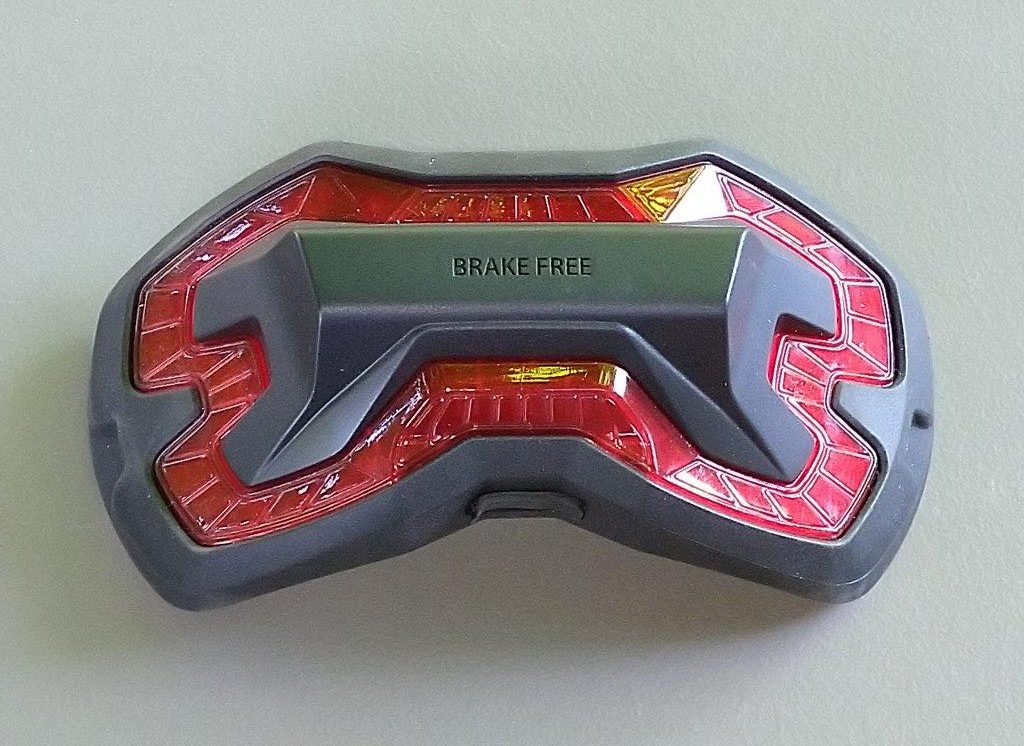
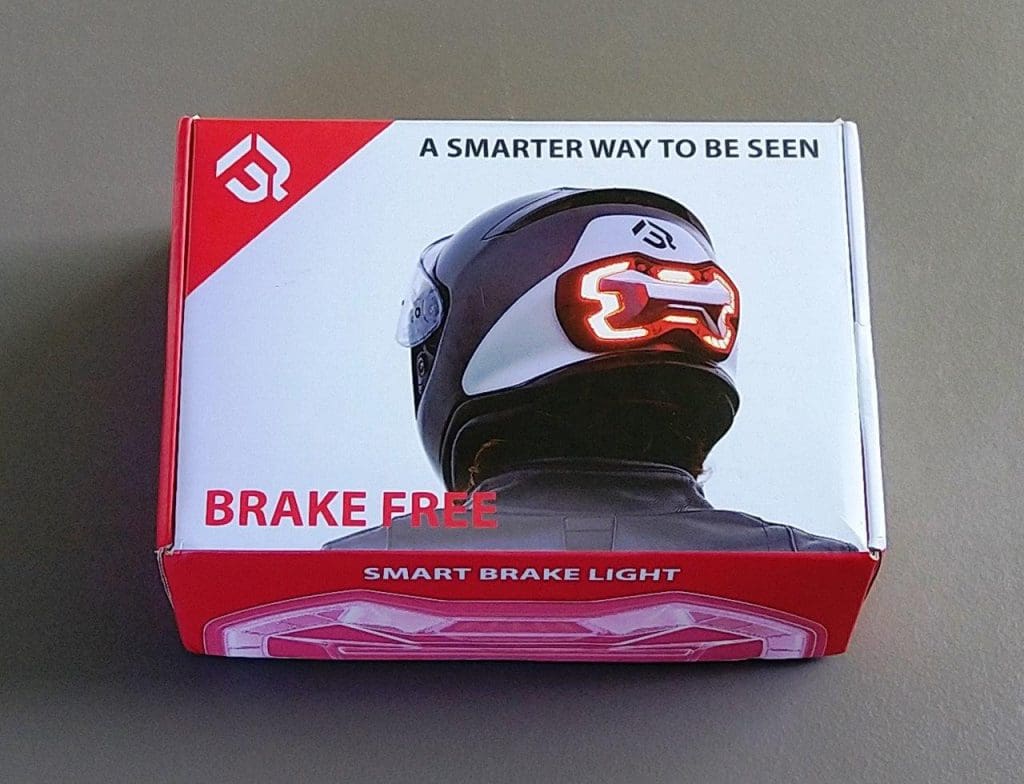
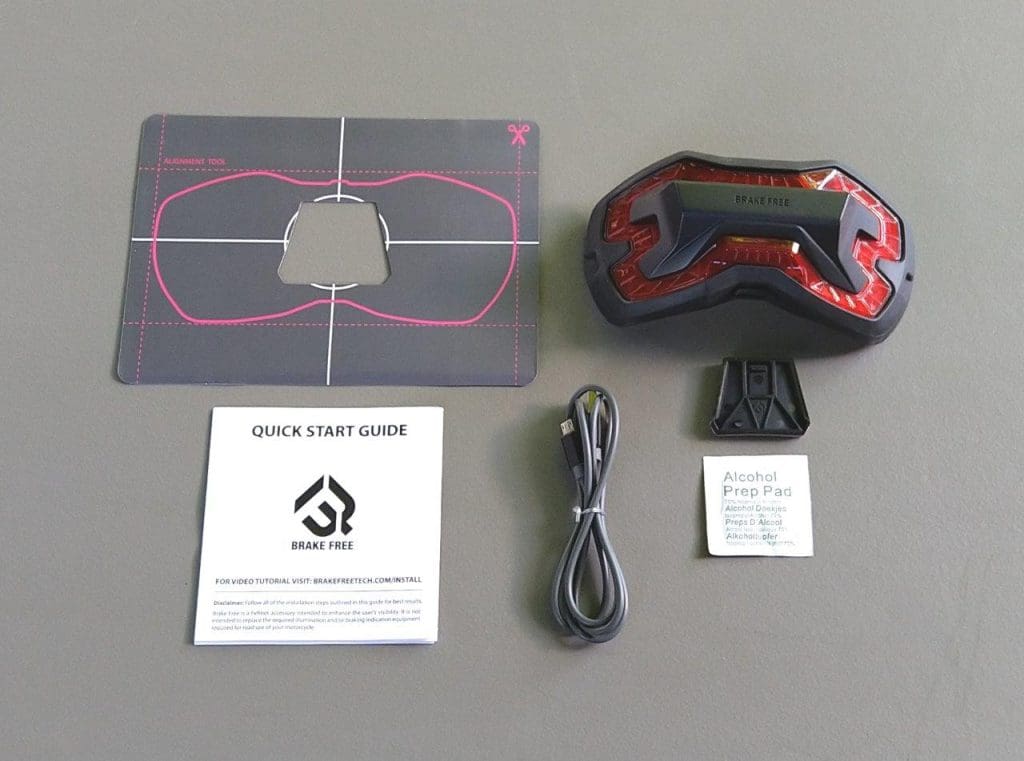
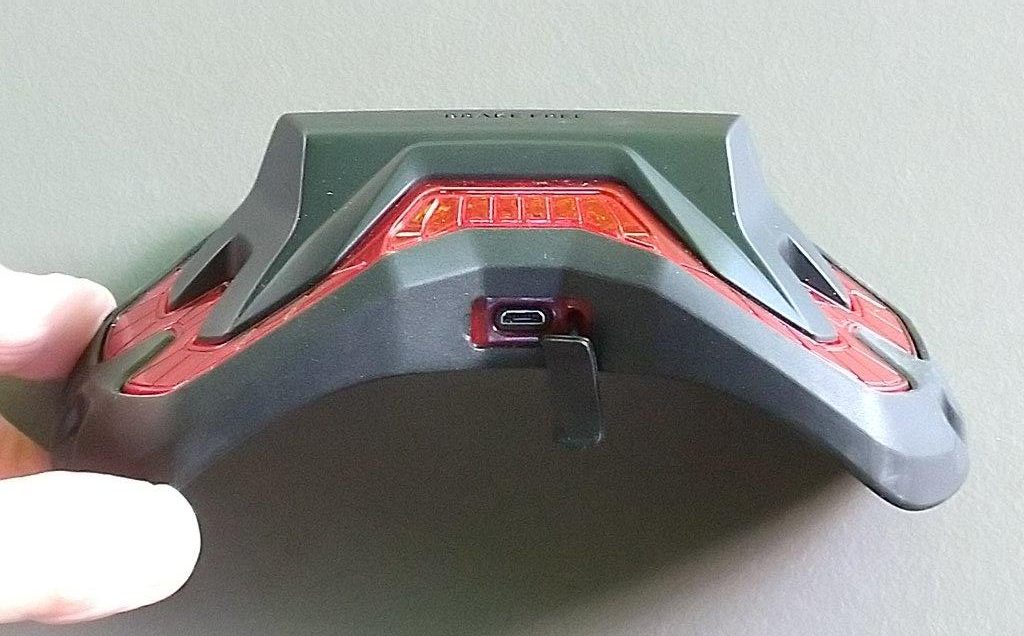
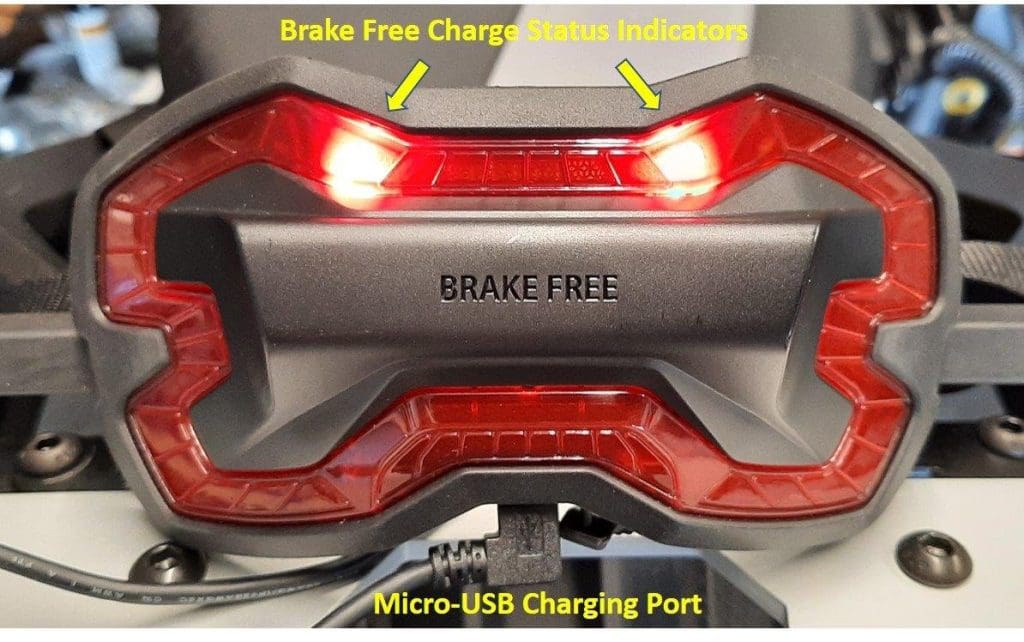
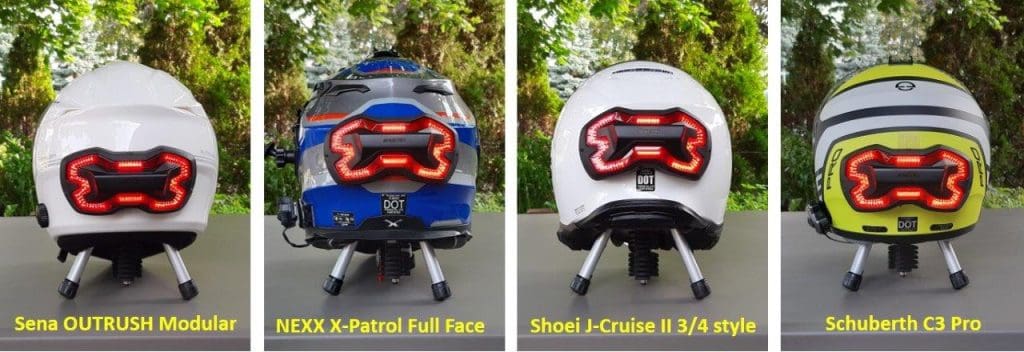
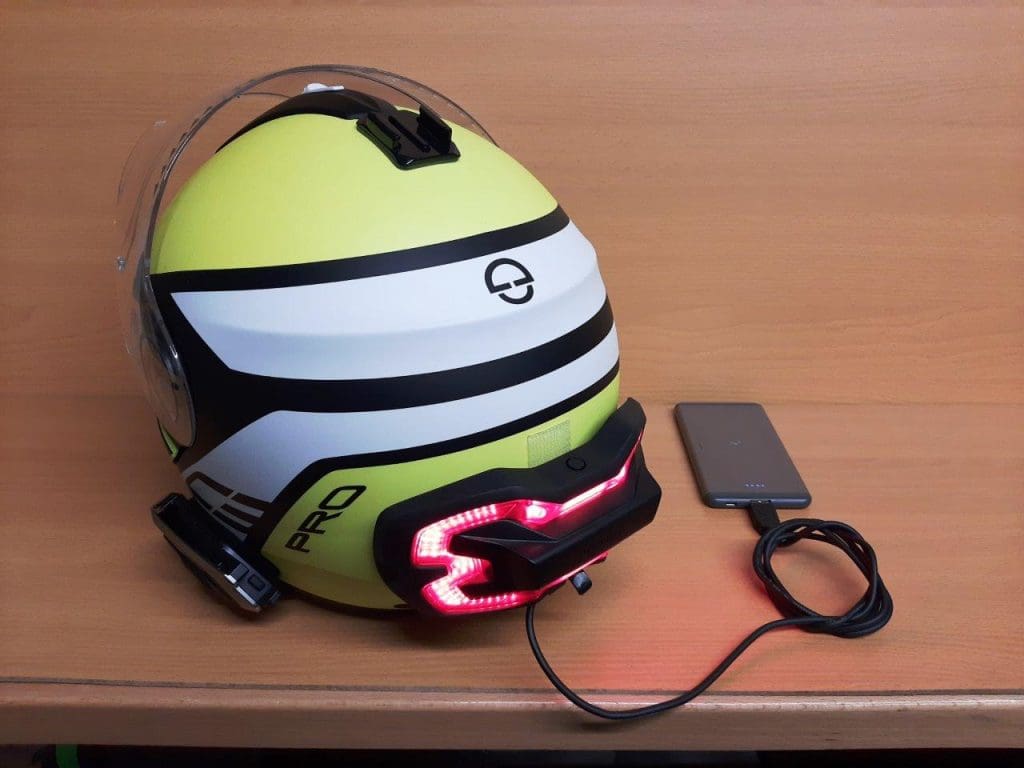
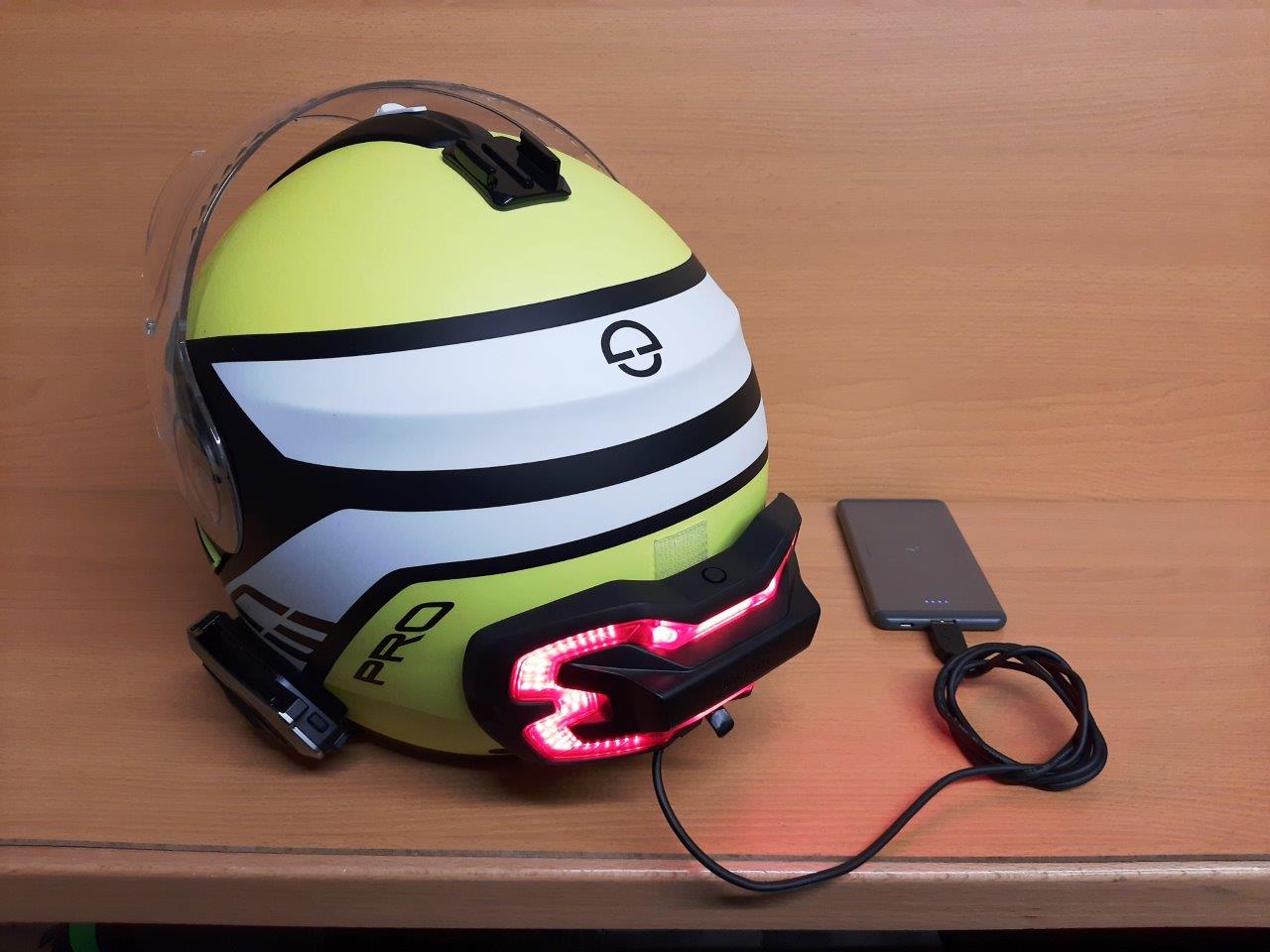

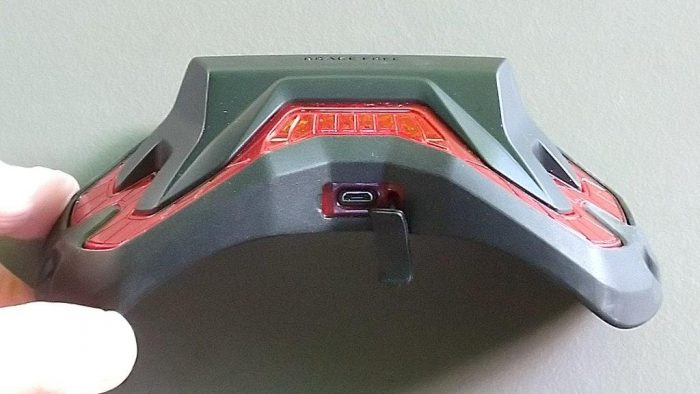

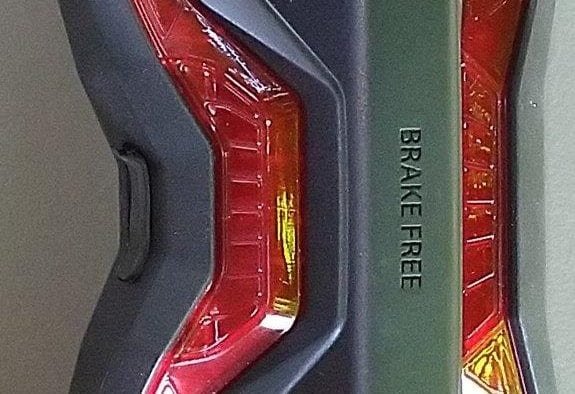
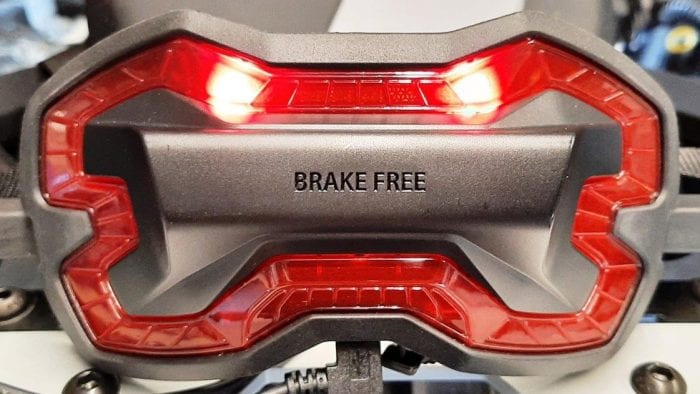
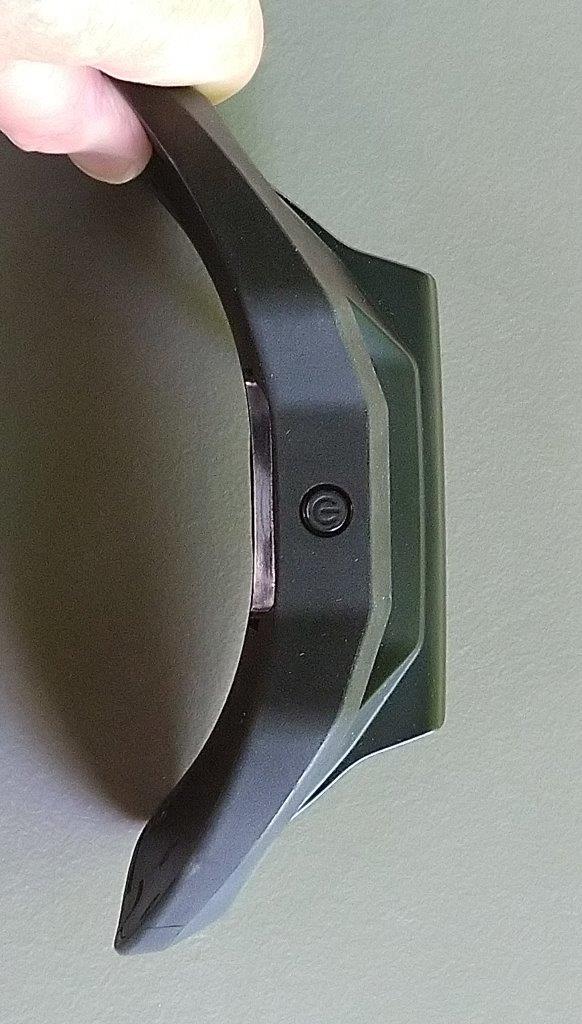
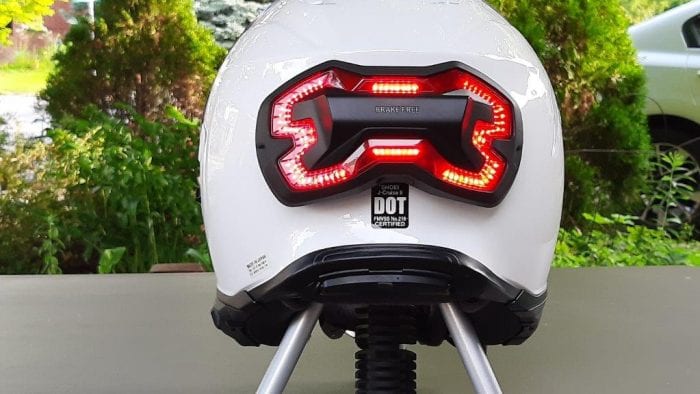




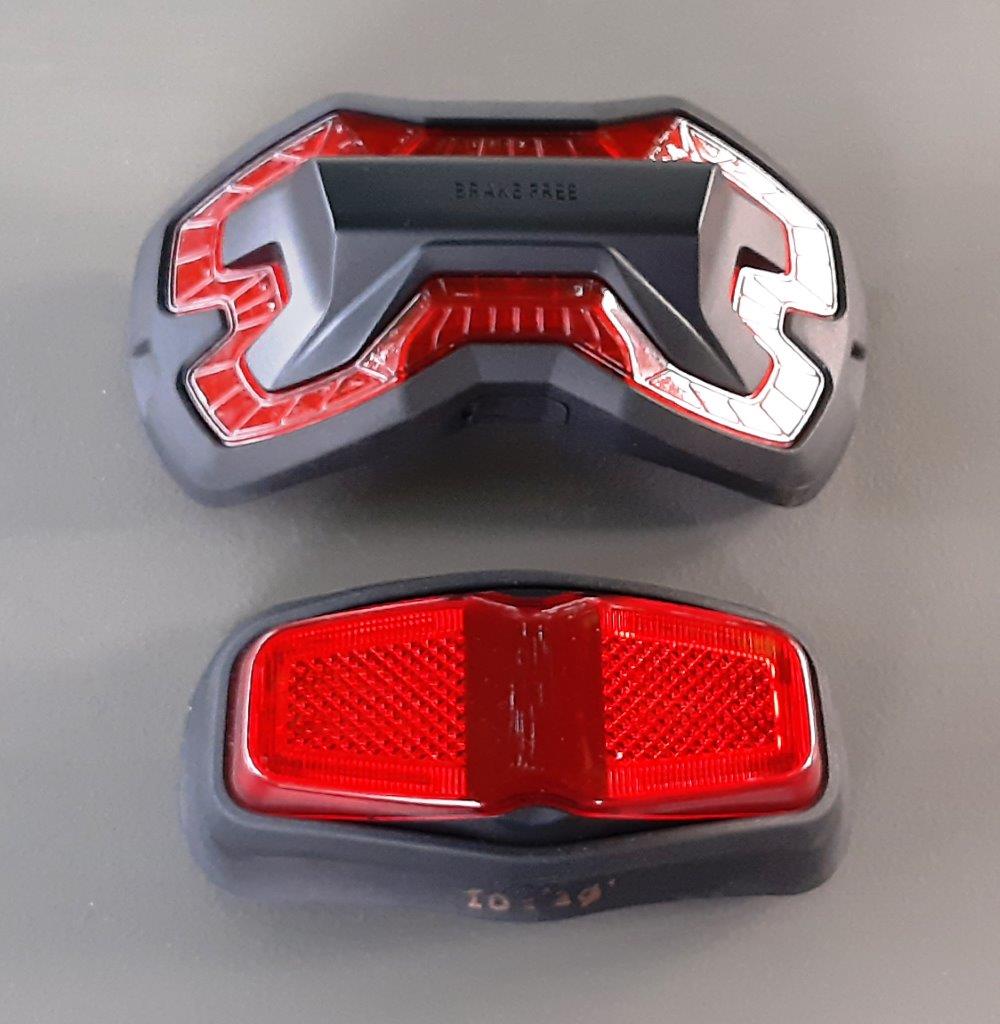
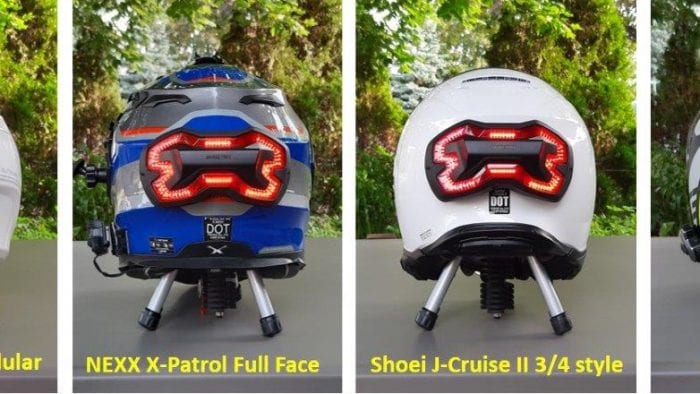
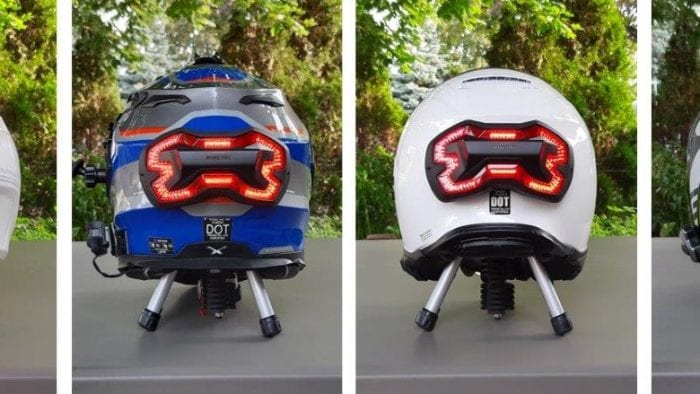
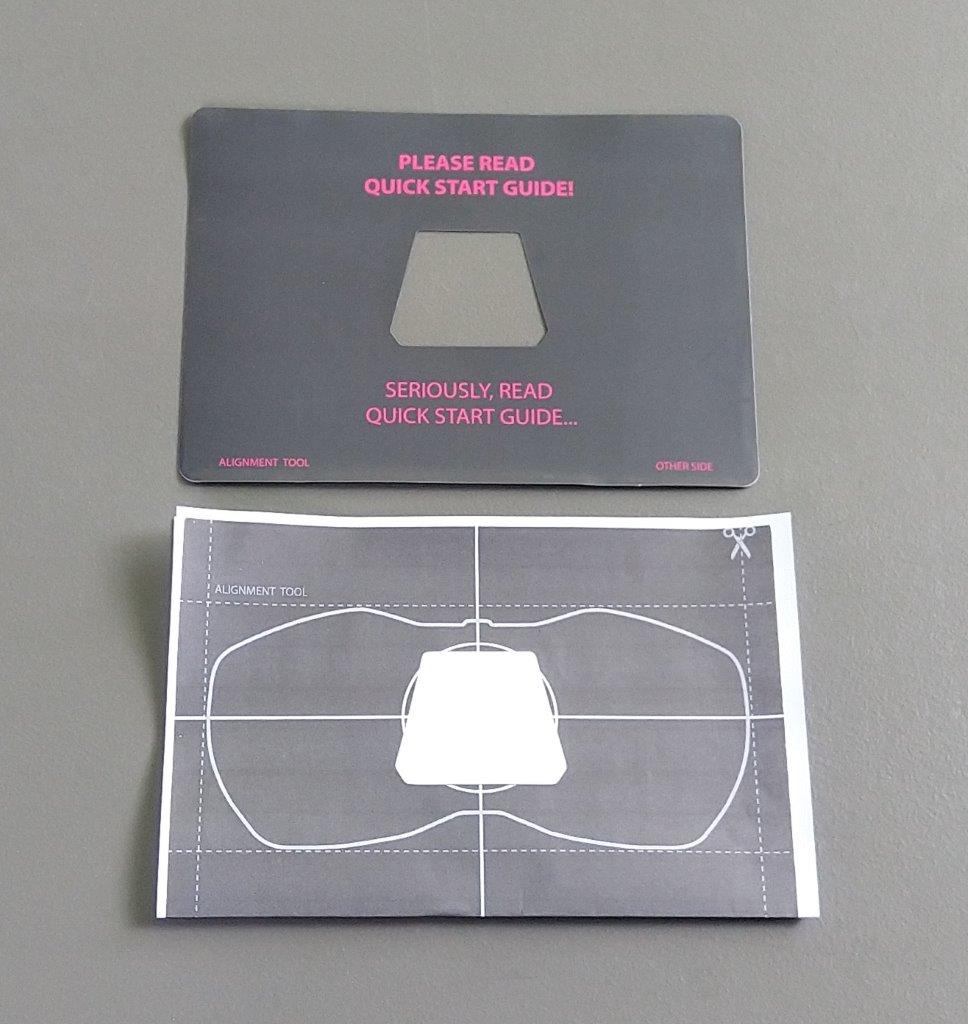
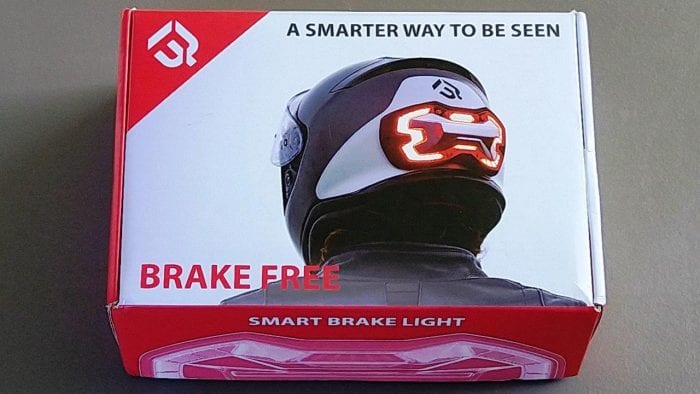

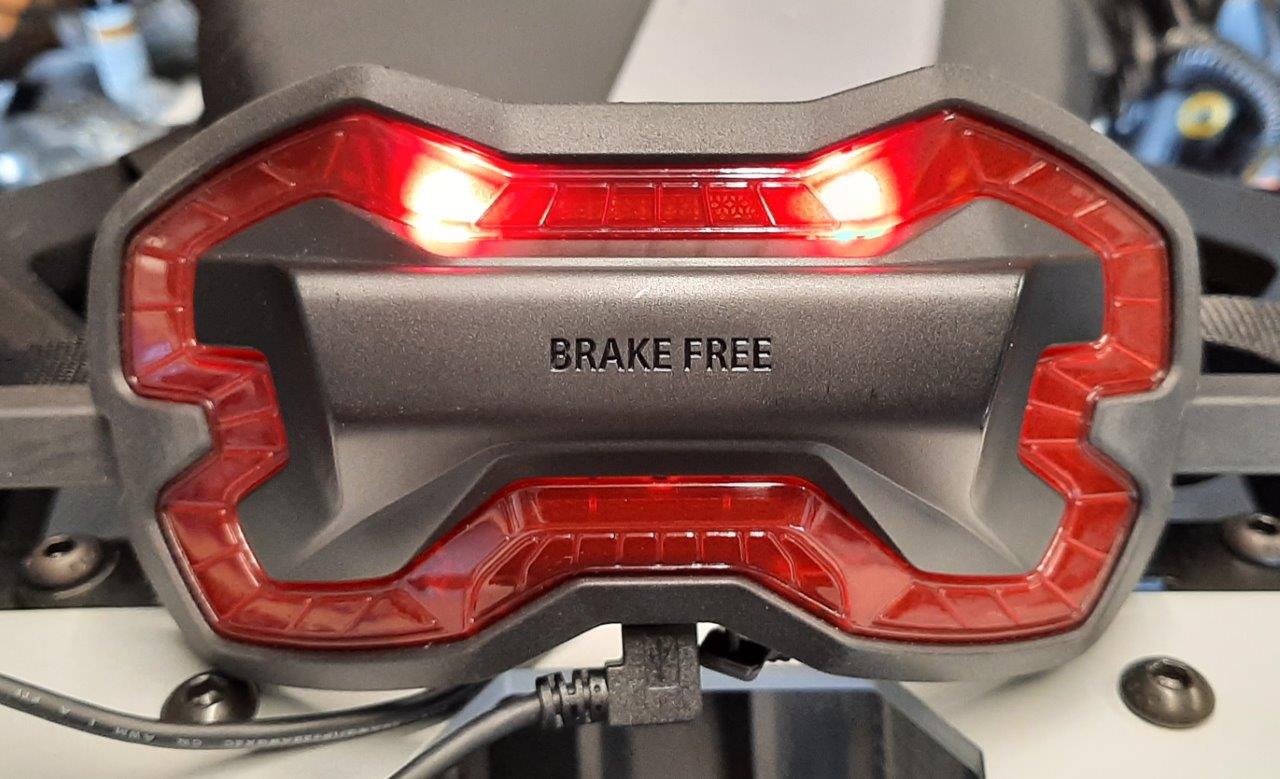

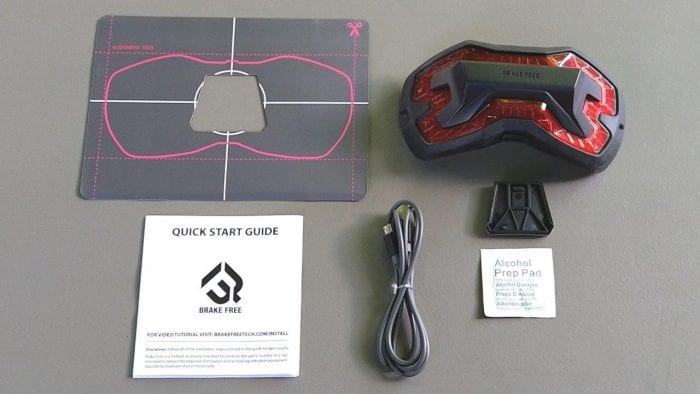




Fantastic and much-needed innovation for rider safety!
How much will it cost me in India and I leave in Bangalore
I was one of the backers of BrakeFree, and I fully agree with everything written here. I am very happy with the product, and it is now default on my helmet – I do not ride without it. I have a clear impression that drivers keep a bigger distance to me than before.
There are some things that can br improved. The on-off button is sometimes a little bit tricky and requires more than one try (maybe because it is designed to be waterproof), and I find the algorithm maybe a little too sensitive. But these are the only gripes I have, and they are indeed tiny compared to the extra safety this product provides. I couldn’t recommend it higher!!
Congratulations on a nice comprehensive review.
I have an inView and like that I don’t have to remember to turn it on and also that it has turn signals as well as braking illumination. Do you know if BrakeFree will produce an upgraded model including turn signals?
Bill, another even later reply…but a good question – I’ve been in touch with BrakeFree over the winter, but not much in the way of insights or new is currently available. Inclusion of turn signals, appreciating complexity/resources/cost, etc., would, from my perspective and I suspect many others, be a great next step.
The inView is indeed a good product for including the turn signal feature, but needs some updating regarding output/oveall visibility – something the Brake Free has.
Bruce
Hi where can I buy this in the UK please?
Nu, very late reply, but it has been found posted on the UK ebay site. Send an email to Brake Free as well. Hope you find a source, the product is well worth it.
Cheers, Bruce
Hi, would you please use a dark color for the text of the “Breakdown” section near the top of the reviews? Light gray is hard to read.
Also: you don’t mention anything about any effect of the weight of the BreakFree or how it affects the aerodynamics of the helmets.
TPB, I will bug the Editor regarding text colour for the Breakdown – its usually just done in italics, but once formatted for publication, things change, agree re visual discernation.
And regarding BrakeFree weight – you can tell that something is now sitting on the back of the helmet, but that is, at least for me and other users, the assessed extent of its impact; and as for aerodynamics, which depending on size/shape of the helmet should be minimal as well, the only time the piece is felt, even marginally, is when the head is turned and/or there is some disruption in the oncoming or cockpit air stream or if the helmet is sitting out in the airstream….its minimal from my experience.
Cheers, Bruce
Which states are legal to use this product? I ride in Oregon, Washington, Idaho, California
Where can I purchase it in India?